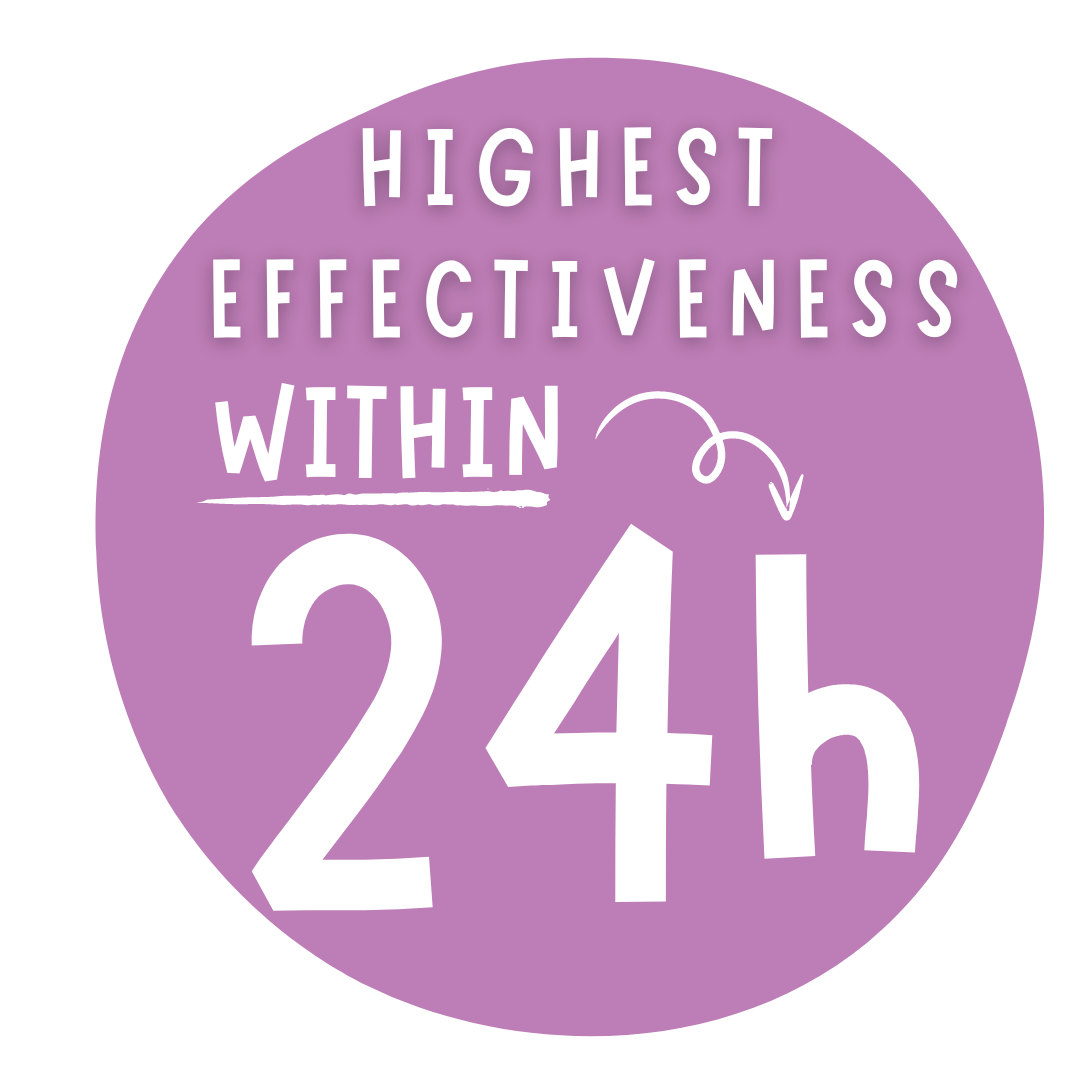Emergency contraception refers to any contraceptive method that can be used after having unprotected or inadequately protected sexual intercourse but before pregnancy occurs. It prevents an unwanted pregnancy. Emergency contraception is a safe and effective method for preventing unwanted pregnancy. It can reduce the risk of pregnancy by up to 99%.
There are several methods for emergency contraception, including copper IUDs and various pills (emergency contraceptive pills).
The most effective method for emergency contraception is placement of a copper intrauterine device (IUD) within five days of an episode of unprotected sex.

If oral emergency contraception pills are preferred, UPA is the method of choice because it is more effective than Levonorgestrel, particularly if more than 72 hours have lapsed.
However, if Levonorgestrel is more readily available and the window of 120 hours has not been exceeded, it is generally advisable to use Levonorgestrel, as the effectiveness of emergency contraception pills decreases over time.
If a progestogen‑containing contraceptive (which is true for all hormonal contraceptive methods) has been taken within a week prior to the emergency contraception pill use or if the start of such a method is planned within five days after emergency contraception use (or since unprotected sex), then Levonorgestrel should be recommended.
Where no dedicated emergency contraception pill products are available, the Yuzpe method is an option, because 8‑10 ordinary combined oral contraceptive pills (OCPs) can be used, depending on their dosage (adding up to 0.1 mg of ethinyl estradiol and 0.5 mg of LNG, with the same dose repeated after 12 hours).
Women with high body weight who do not want to use an IUD may be advised to take UPA.
There is some evidence that the effectiveness of Levonorgestrel emergency contraception pills decreases with increasing body weight, more so than with UPA emergency contraception pills.


INTRAUTERINE DEVICES
The most effective method for emergency contraception is placement of a copper intrauterine device (IUD) within five days of an episode of unprotected sex.
When the time of ovulation can be estimated, a Cu‑IUD can be inserted beyond five days after intercourse, as long as insertion does not occur more than five days after ovulation.
Any copper IUD is safe and effective.
After post‑coital insertion of an IUD, the pregnancy rate is less than 0.1%.
Furthermore, the IUD can provide up to 12 years of ongoing contraceptive protection after placement.
The main mechanism of action of the IUD is to prevent fertilisation by inhibiting sperm viability and function. If ovulation has already occurred and fertilisation has taken place, copper ions influence the female reproductive tract and impair endometrial receptivity.
If a woman is already pregnant, use of an IUD is contraindicated.
LEVONORGESTREL PILLS
According to the World Health Organization (WHO), Levonorgestrel emergency contraception pills can be used until 120 hours (five days) after unprotected or inadequately protected sexual intercourse, but they should be used as soon as possible.
Based on recent analyses, the Faculty of Sexual and Reproductive Healthcare (FSRH) in the United Kingdom has concluded that Levonorgestrel is ineffective after 96 hours.
The effectiveness of Levonorgestrel emergency contraception pills was studied in a multicentre World Health Organization (WHO) trial in 1998. Overall, 1.1% of the women became pregnant after using Levonorgestrel ECPs within 72 hours after unprotected or inadequately protected sexual intercourse.
In a meta‑analysis of two more recent studies, comparing Levonorgestrel emergency contraception pills with ones containing ulipristal, the effectiveness appeared to be lower. In this meta‑analysis, 2.2% of the women became pregnant despite using Levonorgestrel emergency contraception pills.
Levonorgestrel is a progestin that has been used for contraception for more than 50 years.
Each emergency contraception pill contains 1.5 mg of Levonorgestrel. It is also available in the form of two pills of 750 mcg, which can be taken together.
Levonorgestrel emergency contraception pills work by inhibiting or delaying ovulation.
Levonorgestrel emergency contraception pills have no effect on sperm function, embryo viability, or endometrial receptivity.
Because ovulation is delayed, no fertilisation takes place.
Levonorgestrel emergency contraception pills do not cause an abortion.
They are no longer effective if ovulation or fertilisation have occurred.
ULIPRISTAL ACETATE PILLS
Ulipristal acetate (UPA) is a selective progesterone receptor modulator.
It was recently introduced as an alternative to Levonorgestrel emergency contraception pills.
It is dosed at 30 mg.
UPA emergency contraception pills have been approved for use until 120 hours (five days) after unprotected or inadequately protected sexual intercourse.
The previously mentioned meta‑analysis of studies in which Levonorgestrel and UPA were compared showed a higher effectiveness of UPA. Of the women who had used UPA emergency contraception pills within 72 hours after UPSI, 1.4% became pregnant, compared to 2.2% pregnancies within the Levonorgestrel group. If emergency contraception was taken within 24 hours after unprotected sex, there was an even larger difference (0.9% versus 2.3% in the UPA and Levonorgestrel groups respectively).
Like Levonorgestrel emergency contraception pills, the main mechanism of action of UPA is prevention of follicular rupture and ovulation.
However, in contrast with Levonorgestrel, UPA is still effective after the onset of the luteinising hormone (LH) surge which precedes ovulation but not post LH peak. This means that there is a wider ‘window of effect’ for UPA, which explains its higher effectiveness.
STI risk
Emergency contraception pills do not prevent the transmission of sexually transmitted infections (STIs).
It is important to emphasise that this applies to all contraceptives other than condoms and should not constitute a selective bias against emergency contraception pills.
If a woman is at risk of an unwanted pregnancy, she may be at risk of STIs as well and STI and HIV testing could be offered.
when
Subject
Contraception











